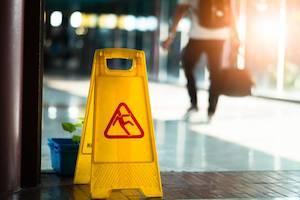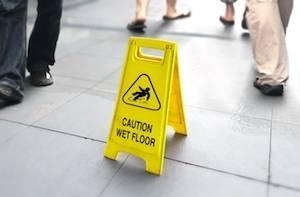
 Sexual assault is an experience that no one wants to go through, and victims of assault will experience a great deal of emotional and physical pain. Sexual assault and harassment are a major concern in the workplace, and if an individual has experienced this type of unacceptable behavior, they should understand that they are not alone and take steps to address the situation.
Sexual assault is an experience that no one wants to go through, and victims of assault will experience a great deal of emotional and physical pain. Sexual assault and harassment are a major concern in the workplace, and if an individual has experienced this type of unacceptable behavior, they should understand that they are not alone and take steps to address the situation.
What Constitutes Sexual Assault in the Workplace?
Sexual assault takes place when one person tries to engage in sexual activity without the consent of the other person. This type of assault can happen in the workplace at any time, and should always be taken seriously. If a person touches another coworker in a sexual manner, even over the clothes, this is considered sexual assault that should be reported.
Even if a worker’s actions do not constitute assault, people should not be made to feel uncomfortable or threatened in the workplace. Even seemingly harmless actions or comments can be considered sexual harassment, and if someone experiences or witnesses these types of illegal actions, they should confront the person committing the harassment or report them to management before the situation gets any worse.
Making a difference in the lives of people is why our law firm exists. A striking example of that commitment is the recent work of Mark Masur and Pat Flaherty. Following an intense five year battle, they obtained a life-changing award for a construction worker who suffered brain damage after being struck by a train. The award will allow the worker and his family to rebuild their lives and to enjoy a secure and stable future. For us, few things compare to the satisfaction of righting wrongs and renewing the human spirit. Congratulations to Mark and Pat for standing tall. Justice is seldom easy, but it is always worth the fight.
For more information about how the attorneys of Kinnally Flaherty Krentz Loran Hodge & Masur P.C. can help you receive the compensation you deserve for injuries suffered due to someone else's negligence, contact us at 630-907-0909 to schedule a free consultation.
 If you experience an accident while on the job, you may qualify for benefits that will assist you while you are out of work. Most full-time and part-time employees are eligible for workers’ compensation, and these benefits can be paid regardless of who was at fault.
If you experience an accident while on the job, you may qualify for benefits that will assist you while you are out of work. Most full-time and part-time employees are eligible for workers’ compensation, and these benefits can be paid regardless of who was at fault.
What is Workers’ Compensation?
Workers’ compensation consists of benefits provided to employees who have either been injured or have fallen ill on the job, as long as the injuries or illnesses occur while the employee was working or were caused by the job they are performing. Aggravations of pre-existing conditions, injuries caused by repetitive use of specific parts of the body, heart attacks, strokes, and other physical issues that occur while working qualify for workers’ compensation benefits.
How to Request Workers’ Compensation
If an employee has been injured or becomes ill on the job, he or she should seek medical treatment immediately. The employer must, by law, pay for all medical services needed to relieve or cure the of injury or illness, as well as all physical or mental rehabilitation, if required.
 Losing your footing and falling down can be embarrassing, but most people tend to think of this type of accident as a minor incident that leads to little more than an inconvenience. However, slip and fall accidents can be extremely dangerous, leading to serious injuries and even death.
Losing your footing and falling down can be embarrassing, but most people tend to think of this type of accident as a minor incident that leads to little more than an inconvenience. However, slip and fall accidents can be extremely dangerous, leading to serious injuries and even death.
Slip and Fall Accident Statistics
In 2014, slip and fall accidents accounted for approximately 32,000 deaths in the United States. At people’s homes or in residential communities, these types of accidents led to more than 31,000 deaths, and around 600 people were killed and 47,000 people were injured while slipping and falling at work.
Where Are Slip and Fall Accidents Likely to Occur?
Slip and fall accidents can happen anywhere. However, the places where slip and fall accidents most often occur are in doorways, ramps, and cluttered hallways. Areas with heavy traffic may also cause slip and fall accidents, as well as places with uneven surfaces, wet areas, unguarded heights, areas prone to spills, and unstable work surfaces. Ladders and stairs have also been proven to be the culprit of slip and fall accidents, injuries, and deaths.
 Car accidents can be very scary, and they can have a major physical, mental, and even emotional impact on the people who are involved. Weather-related car accidents are absolutely no exception, and accidents which take place in the winter may be even more nerve-wracking than accidents in warmer weather. Every year in the United States, there are an average of nearly 5,900 deaths caused by weather-related car accidents, and over 445,000 injuries are reported. If you have been involved in a weather-related car accident, you may find yourself confused about who is at fault and how to receive compensation for your damages.
Car accidents can be very scary, and they can have a major physical, mental, and even emotional impact on the people who are involved. Weather-related car accidents are absolutely no exception, and accidents which take place in the winter may be even more nerve-wracking than accidents in warmer weather. Every year in the United States, there are an average of nearly 5,900 deaths caused by weather-related car accidents, and over 445,000 injuries are reported. If you have been involved in a weather-related car accident, you may find yourself confused about who is at fault and how to receive compensation for your damages.
Who Is at Fault?
If one person is involved in a weather-related car accident, such as when they lose control of their vehicle and run into a guardrail, snow bank, or tree, they are automatically at fault, even if law enforcement does not issue a ticket. When a claim is filed regarding the car accident, points will be added to the driver’s record, most likely increasing their insurance premiums in the future. The driver will also be responsible for paying their collision coverage, which requires a deductible to be paid to get the car repaired.
 There are more than 1.6 million individuals who live in nursing homes or rehabilitation facilities in the United States, and around 900,000 people live in residential care facilities or assisted living facilities. Unfortunately, due to inadequate staffing and improper training in these facilities, there are far too many cases where elderly individuals are either abused or neglected.
There are more than 1.6 million individuals who live in nursing homes or rehabilitation facilities in the United States, and around 900,000 people live in residential care facilities or assisted living facilities. Unfortunately, due to inadequate staffing and improper training in these facilities, there are far too many cases where elderly individuals are either abused or neglected.
Even though the terms nursing home abuse and nursing home neglect are often used interchangeably, they are distinct forms of mistreatment, and it is important to understand the differences between these two offenses.
What is Nursing Home Abuse?
Nursing home abuse occurs when a caregiver knowingly causes physical injury to a resident, unreasonably restrains or confines them, acts in an intimidating or cruel manner, or otherwise willfully causes them physical, emotional, or mental harm. Some examples of nursing home abuse include, but certainly are not limited to:
 If you have been injured on the job, you may be eligible for workers compensation benefits, especially if you are no longer able to go back to work due to the nature of your injury. If severely injured, you may qualify for permanent disability benefits. Even though there are two different types of permanent disability benefits, there is a major difference between permanent partial disability (PPD) and permanent total disability (PTD), and it is important to understand the distinction between the two types.
If you have been injured on the job, you may be eligible for workers compensation benefits, especially if you are no longer able to go back to work due to the nature of your injury. If severely injured, you may qualify for permanent disability benefits. Even though there are two different types of permanent disability benefits, there is a major difference between permanent partial disability (PPD) and permanent total disability (PTD), and it is important to understand the distinction between the two types.
Permanent Partial Disability
In order to receive permanent partial disability benefits, an injured individual may still earn income from their job, but they are partially impaired from a permanent injury. Permanent partial disability can include the following injuries:
 When someone is a victim of sexual abuse, they may experience a wide variety of physical and emotional problems throughout their lives. Depending on a victim’s age group and personality, every person displays their reactions to sexual abuse differently than others. It is important for friends and family members to recognize the signs of abuse and help their loved ones seek help when needed.
When someone is a victim of sexual abuse, they may experience a wide variety of physical and emotional problems throughout their lives. Depending on a victim’s age group and personality, every person displays their reactions to sexual abuse differently than others. It is important for friends and family members to recognize the signs of abuse and help their loved ones seek help when needed.
Sexual Abuse Warning Signs in Children
Research shows that one in five girls and one in 20 boys are affected by child sexual abuse. Between the ages of seven and 13 years old, children are especially vulnerable to sexual abuse. If a child has been sexually abused, then he or she will likely display the following signs:
 Every year, millions of patients visit a doctor or hospital to receive medical treatment. Most of the time, they expect to have their issues taken care of, and they trust doctors and nurses to provide quality care. However, there are far too many cases in which medical procedures go wrong, and serious injury or death occurs as a result. When someone is injured due to the negligence of medical providers, they may be able to seek compensation for medical malpractice.
Every year, millions of patients visit a doctor or hospital to receive medical treatment. Most of the time, they expect to have their issues taken care of, and they trust doctors and nurses to provide quality care. However, there are far too many cases in which medical procedures go wrong, and serious injury or death occurs as a result. When someone is injured due to the negligence of medical providers, they may be able to seek compensation for medical malpractice.
What is Medical Malpractice?
Medical malpractice occurs when a hospital, doctor, or other healthcare professional causes injury or death to a patient, due to an error in diagnosis, treatment, health management, or aftercare. Medical negligence is responsible for the deaths of over 400,000 Americans every year, with these medical errors costing the country more than $19 billion.
 The holiday season has officially begun, and as the weather gets colder and we begin to experience snowy and icy conditions, the roads and sidewalks are likely to become slick. Slippery walkways can lead to premises accidents, and when these types of accidents occur while someone is working, they can result in expensive workplace injury claims. To prevent serious injuries and even death, both employers and employees should take steps to stay safe during the holidays.
The holiday season has officially begun, and as the weather gets colder and we begin to experience snowy and icy conditions, the roads and sidewalks are likely to become slick. Slippery walkways can lead to premises accidents, and when these types of accidents occur while someone is working, they can result in expensive workplace injury claims. To prevent serious injuries and even death, both employers and employees should take steps to stay safe during the holidays.
Slip and Fall Injury Statistics and Prevention Tips
In 2014, slip and fall accidents resulted in over 247,000 workplace injuries that resulted in time off from work, including 818 worker deaths. To avoid these types of injuries and the personal and professional costs that can result, follow these tips: